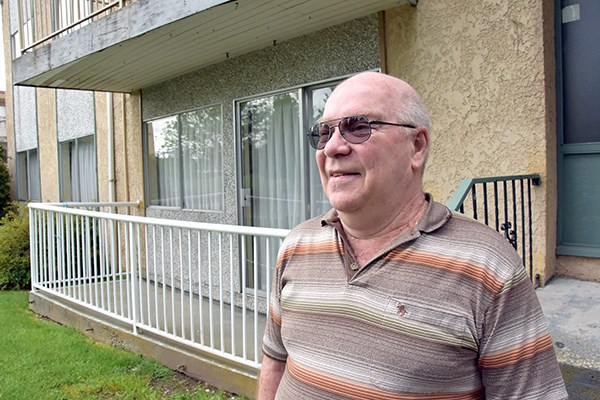Rising rents and declining vacancy rates are continuing to squeeze Tri-City families, with high housing costs putting more people at risk of homelessness, according to the BC Non-Profit Housing Association (BCNPHA).
Data compiled for the BCNPHA’s Canadian Rental Housing Index outlines what a lot of residents in the area already know: Coquitlam, Port Coquitlam and Port Moody are becoming increasingly unaffordable for even households with average incomes.
In Coquitlam, for example, close to half of all renters are spending 30% or more of their income on rent and utilities, according to the report, while more than a quarter are spending 50% or more.
The Canada Mortgage and Housing Corporation states people in the 30% category have “affordability issues” while those spending more than half of their income are “considered to be at a crisis level of spending” and are “at risk of homelessness.”
Doug Baker knows first-hand the issues many renters are facing in the expensive Metro Vancouver market. The 68-year-old lives in Burquitlam in a building slated for demolition and has to be out of his unit by October. He has scoured the area for a new apartment he can afford but, so far, has come up empty.
“I don’t know where I am going to go,” he said, adding later: “Any of the searches I have done so far, I am whacking my head against the wall. I have been trying to find something in Coquitlam — the Tri-Cities even — and basically, for me, there is nothing.
“I have started shopping but there is nothing in Coquitlam,” Baker told The Tri-City News. “Even the co-ops have waiting lists and aren’t accepting applications.”
With the Canadian Rental Housing Index placing the average rent in Coquitlam at $1,217, Baker said it is unlikely he would be able to find a unit matching his current monthly rate. Still, he counts himself lucky.
Baker’s landlord, Concert Properties, which is also the developer of the site, has been accommodating and may even be able to move him to another unit on the property that is not slated for demolition until a later phase of construction. That would buy him some time before he has to relocate again, he said.
In the meantime, he is keeping his eyes open for a place where he can settle for the long term.
Gina Johnson is another Tri-City renter struggling to find a place she can afford. The single mother of three currently lives in a three-bedroom unit on Burke Mountain where she pays $1,500 a month, which she said by today’s standards is “dirt cheap.”
But since her daughter had a baby last year, the family has been looking for something bigger, like a house, to ensure everyone has their own room.
“You can’t find anything to rent like that under $2,000,” she told The Tri-City News. “And anything at the $2,000 mark is a tear-down.”
Johnson said she is close to a lot of other single mothers in the area and noted that many have to sleep on their couches to ensure their kids get their own rooms.
The Canadian Housing Index notes that 14% of Coquitlam renters are in “overcrowded conditions,” well above the B.C. average of 10%; the number is 9% in Port Coquitlam and 8% in Port Moody.
Sandy Burpee, the outgoing chair of the Tri-Cities Homelessness Task Group, said with the value of real estate rising, higher-income households that may have considered purchasing property in the past are now resorting to renting. That puts pressure on the lower-income rental housing market, he said, which has led to sharp increases in the amount of money landlords are charging for their units.
According to the index, rents have risen 17.6% in Coquitlam between 2011 and 2016 while PoCo saw a 10.6% increase over the same period and Port Moody rents rose 9.1% (see sidebar below).
“We know that rents in the last couple of years have been going up faster than they have previously,” Burpee said. “I put that down to increasing demand for rentals because of the skyrocketing price of real estate.”
For more data from the Canadian Rental Housing Index click here.
@gmckennaTC
WHO’S SPENDING WHAT
Coquitlam
• 47% of households spending 30% or more of their income on rent and utilities
• 26% of households spending 50% or more of their income on rent and utilities
• 14,495 renters out of 51,190 households
• 14% of households living in overcrowded conditions
Port Coquitlam
• 40% of households spending 30% or more of their income on rent and utilities
• 18% of households spending 50% or more of their income on rent and utilities
• 5,020 renters out of 21,715 households
• 9% of households living in overcrowded conditions
Port Moody
• 35% of households spending 30% or more of their income on rent and utilities
• 17% of households spending 50% or more of their income on rent and utilities
• 3,240 renters out of 12,940 households
• 8% of households living in overcrowded conditions
British Columbia
• 43% of households spending 30% or more of their income on rent and utilities
• 21% of households spending 50% or more of their income on rent and utilities
• 10% of households living in overcrowded conditions
– source: Canadian Rental Housing Index



